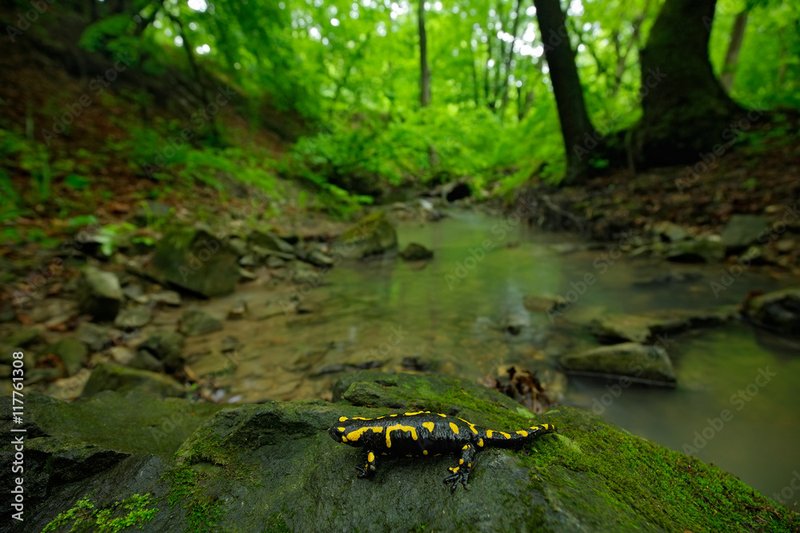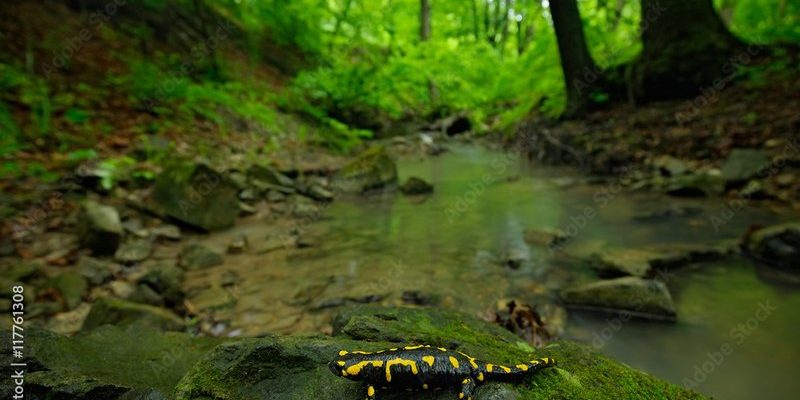
Now, when we talk about salamanders, we’re not just discussing one type. There are over 700 species out there, each uniquely adapted to its environment. They’re not just cute creatures; they have intricate relationships with other species and their surroundings. So, let’s dive deeper into their world and explore how they contribute to their natural habitats.
Understanding Salamanders’ Habitat
Salamanders thrive in a variety of environments, from forests to meadows to swamps. They usually prefer damp, moisture-rich areas because they have thin skin that absorbs water easily. Without enough humidity, they can quickly become dehydrated. Forest floors, especially, with their layers of fallen leaves and rotting wood, provide the perfect cover for these shy critters. Picture a cozy spot where they can hide from predators while hunting for food—sounds like a perfect home, right?
These amphibians often seek out areas close to water, such as ponds or streams. These locations not only provide a drinking source but also serve as breeding grounds. Some salamanders lay their eggs in water, while others may choose damp soil or leaf litter. It’s all about finding the right conditions to ensure their young can thrive. So, if you’re exploring a wetland or a rich forest, keep your eyes peeled; you just might spot one hiding under a rock or nestled in a pile of leaves!
Salamanders as Pest Controllers
One of the most significant roles salamanders play in their ecosystems is as effective pest controllers. You might be wondering how this works. Well, these little creatures feed on a variety of invertebrates like insects, spiders, and even small worms. By keeping these populations in check, they help maintain balance within their habitats.
For instance, if insect populations exploded, they could devastate plant life, leading to a cascade of negative impacts on the ecosystem. With salamanders on the job, these populations remain stable, enabling plants to grow and flourish. Imagine a garden: if there are too many weeds (or pests), it struggles to thrive. Salamanders help to keep that garden in check, ensuring a healthy balance.
Moreover, their presence indicates a healthy environment. Salamanders are sensitive to changes in their habitat, particularly pollution. If their numbers decline, it can signal a larger issue in the ecosystem, perhaps something harmful lurking beneath the surface. So, in many ways, salamanders act as bioindicators, providing us with clues about the health of the environment.
The Food Chain and Salamanders
Salamanders are an important part of the food chain, linking various levels of their ecosystems together. They serve as prey for a variety of animals, including birds, snakes, and mammals. Think of them like a tasty snack for many larger creatures. By being a food source, they help nourish and sustain other wildlife.
But it’s not just about being food. As predators themselves, they consume small invertebrates, which helps regulate those populations. This keeps the ecosystem in balance by ensuring that one group doesn’t dominate the others. You might say they have a dual role—both hunters and the hunted in the intricate web of life.
In addition, their close association with moist environments means they can help sustain a diverse range of species. When they thrive, they create an environment where many different animals can coexist peacefully. This diversity is crucial for resilience against environmental changes.
The Role of Salamanders in Soil Health
Besides being delightful to spot in the wild, salamanders also make significant contributions to soil health. As they roam through their environments, they burrow into the ground, aerating the soil. This aeration allows nutrients to circulate more effectively, creating a healthier growing environment for plants.
When salamanders consume their food, they also contribute to the organic matter within the soil. Their waste products enrich the soil, helping it retain moisture and vital nutrients. So, in essence, these creatures act like tiny gardeners, ensuring that the ground remains fertile for future plant growth. And we all know that healthy plants are essential for a thriving ecosystem!
Salamanders also participate in the decomposition process. As they feed on dead organic matter, they help break it down, returning crucial nutrients back into the soil. This process is vital for sustaining plant life and maintaining a healthy ecosystem. It’s like a cycle of life, and salamanders are an integral part of that journey.
Salamanders and Climate Change
Sadly, salamanders are facing challenges due to climate change. As temperatures rise and habitats alter, these sensitive creatures are struggling to adapt. Many species are losing their natural environments, which makes their role in the ecosystem even more critical—and vulnerable.
These shifts affect their breeding cycles, food availability, and even their vulnerability to predators. Imagine trying to find food in a changing landscape; it can be incredibly tough. The decline of salamanders can have a ripple effect on the ecosystem, threatening the balance they help maintain. So, protecting them means looking out for many other interconnected species as well.
Conservation efforts are more important than ever. Creating protected areas and preserving their natural habitats helps ensure that these remarkable creatures can continue their essential roles. Every time we plant a tree or restore a wetland, we’re not just helping salamanders; we’re contributing to the greater health of our planet.
How You Can Help Salamanders
So, what can you do to support these amazing amphibians? Here are a few simple actions that can make a difference:
- Protect Their Habitats: Avoid disturbing wetlands and forest areas. These are crucial for their survival.
- Educate Others: Share what you know about salamanders! The more people understand their importance, the better chances they have for conservation.
- Get Involved: Join local conservation groups or participate in habitat restoration projects. Every little bit helps!
- Reduce Pollution: Use fewer chemicals in your garden and landscaping to preserve local water quality.
By taking these small steps, you’re directly contributing to the survival of salamanders and the health of our ecosystems. It’s a fantastic way to connect with nature and protect our planet for future generations.
In conclusion, the role of salamanders in their natural habitats is absolutely vital. They’re not just cute critters you might spot on a hike; they’re essential players in maintaining ecological balance. From pest control to soil health, their contributions are numerous and significant. By supporting their conservation, we can help ensure that these incredible creatures continue to thrive while keeping our ecosystems healthy. So, the next time you encounter a salamander, take a moment to appreciate the big impact that little creature is making!

